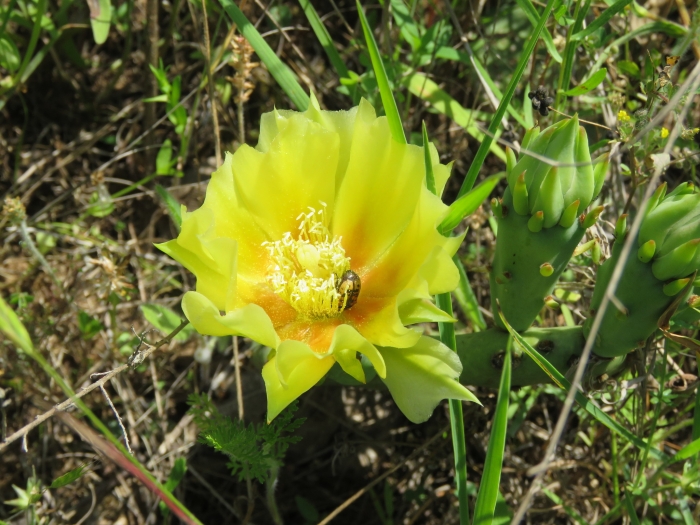Plains Pricklypear
(Opuntia macrorhiza)
Plains Pricklypear (Opuntia macrorhiza)
/
/

Annika Lindqvist
CC BY 4.0


















































Estimated Native Range
Summary
Plains Pricklypear is valued for its drought tolerance and striking yellow flowers, which can add a splash of color to rock gardens, xeriscapes, and desert-themed landscapes. It is also used in native plant gardens to support local ecosystems. This cactus requires minimal maintenance, thriving in full sun and well-drained soils. It is tolerant of poor soils and needs very little water once established. While it is generally disease-resistant, overwatering can lead to root rot. It is important to handle with care due to its spines and glochids, which can cause skin irritation.CC BY-SA 4.0
Plant Description
- Plant Type: Shrub, Succulent
- Height: 0.5-1 feet
- Width: 0.5-1 feet
- Growth Rate: Slow
- Flower Color: Yellow
- Flowering Season: Spring, Summer
- Leaf Retention: Evergreen
Growth Requirements
- Sun: Full Sun
- Water: Very Low
- Drainage: Fast
Common Uses
Bank Stabilization, Bee Garden, Bird Garden, Butterfly Garden, Deer Resistant, Drought Tolerant, Edible*Disclaimer: Easyscape's listed plant edibility is for informational use. Always verify the safety and proper identification of any plant before consumption., Erosion Control, Fire Resistant, Groundcover, Hummingbird Garden, Low Maintenance, Potted Plant, Rabbit Resistant, Rock Garden, Showy Flowers, Street Planting
Natural Habitat
Native to arid and semi-arid prairies and grasslands
Other Names
Common Names: Grassland Pricklypear , Western Pricklypear , Plains Pricklypear , Twistspine Pricklypear , Plains Twistspine Pricklypear , Nopal Raizudo
Scientific Names: Opuntia macrorhiza , Opuntia cymochila , Opuntia utahensis , Opuntia tortispina , Opuntia macrorhiza var. macrorhiza , Opuntia polyacantha var. juniperina , Opuntia mackensenii , Opuntia tenuispina , Opuntia grandiflora , Opuntia leptocarpa
GBIF Accepted Name: Opuntia macrorhiza Engelm.